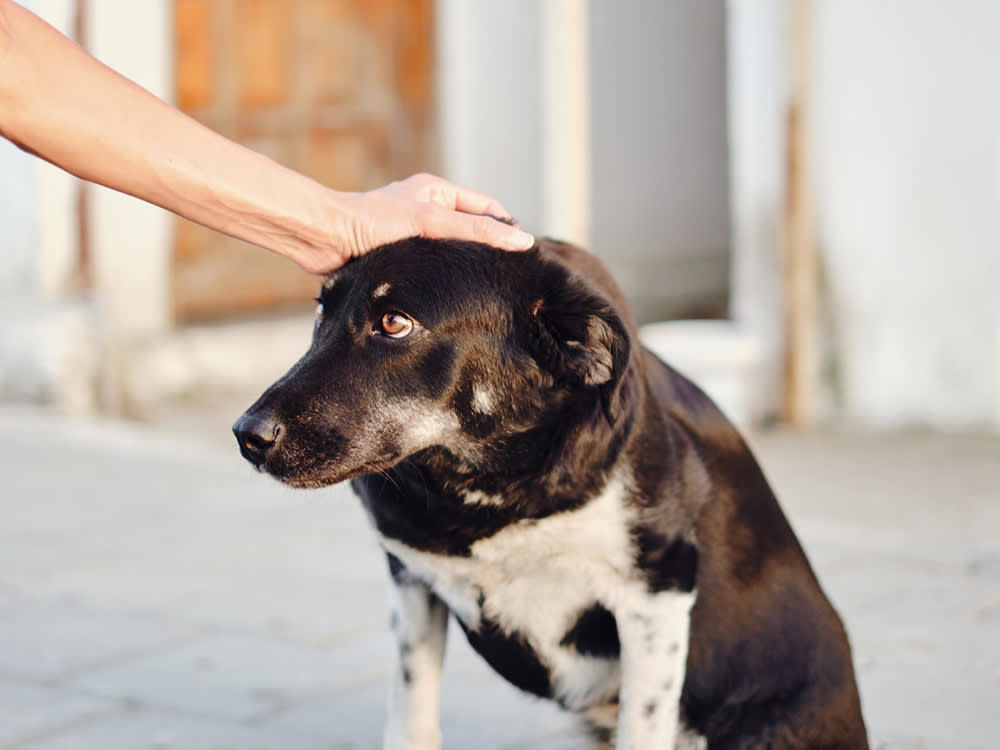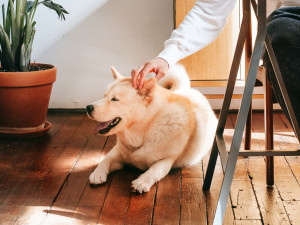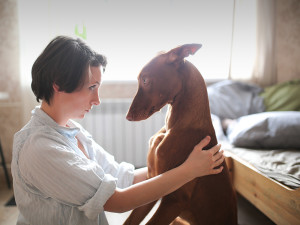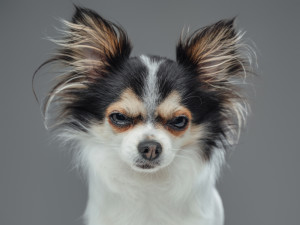Uh, Why Doesn’t My Dog Like Getting Pet?
“No touch-y!”
The first thing you think to do when you meet a dog is to reach out your hand and give them a little pat on the head. If, however, you’ve done this, and a dog has looked at you like you just greatly offended them, there might be a reason. Ask any dog trainer or behaviorist; we see it every day in the office, in classes and on neighborhood streets: people cheerfully patting their dogs, while the dogs look miserable.
This is not to say most dogs don’t love to be petted. Most of them do. But then...they don’t. Honest. Dogs love petting and they don’t love petting, and both of those statements are equally true. Ironically, the explanation for that seeming contradiction lies in the behavior of those who are actually doing the petting.
Trick question: All dogs are perfect! But find out which type is the best fit for you.
Put yourself in your dog’s snow booties for a minute, and it will all make sense. Like most humans, you probably love a good back rub. Just thinking about one can make most of us smile. But you don’t want one every minute of every day, do you? What if you’re in an important Zoom meeting? It would look pretty weird to Linda from accounting if a pair of hands were massaging your back while you went over next month’s budget. It’s all about timing.
When Your Dog Doesn’t Want To Be Touched
Dogs are just like us: Their enjoyment of touch depends on when it’s offered, how it’s done, and where on the body it’s directed.
How much do you spend on your pet per year?
Context is key
Context is the variable that guardians most often ignore. Do you want a massage right now? Probably not, if you’re doing anything that requires concentration or engagement.
Dogs are no different: They most enjoy being stroked during quiet times, when the pack is settled in, cozied up in the living room or bedroom, the outside world shut away for awhile. They enjoy being stroked least when they’re in high-arousal play mode. Watch a dog who is called away from an exuberant play session and is “rewarded” with a pat on the head — most will turn their heads and move away. Most dogs are not fans of patted while greeting other dogs, eating their dinner, or doing something that requires concentration.
And, just like people, dogs vary tremendously when it comes to who they want to touch them. Some are veritable streetwalkers, happy to get cuddly with anything with hands, while others are uncomfortable having strangers touch them at all, at least on the first date. We generally expect dogs to tolerate being touched by anyone, but that doesn’t mean they like it. They’re just usually not in a position to do much about it.
Getting the right spot
In general, most dogs enjoy being touched on:
The sides of their head
Under their ears
Under their chin
On their chest
At the base of their tail
Although some dogs will turn inside out for any touch at all, most don’t like their paws handled, aren’t fond of anyone messing around with their hind legs or genitals, and downright hate pats on the top of their head. Of course, every dog — like every person — is different. Some people are particular about where they want to be touched; others are happy to make contact with another warm body any way they can.
How you pet your dog matters, too
Individual preferences are just as important for dogs as they are in people. In general, most of us enjoy gentle but firm strokes and rubs. But patting, especially rapidly and repeatedly on top of a dog’s head, tends to put them off. This should not come as a big shock to humans — how much would you like it if a stranger walked up and patted you on the top of your head? In spite of that, people do it to dogs all the time.
Petting Isn’t Always Rewarding to Pups
When and how you pat your dog may seem like a trivial issue; we likely won’t see it on CNN any time soon. But it’s actually an important one, given the amount of suffering that people and dogs experience when the relationship between them goes sour. By patting their dog’s head as a reward for a good recall, dog parents everywhere think they are using positive reinforcement, but what they are really teaching the dog — with stunning effectiveness — is not to come when called.
Petting Plays a Role in Your Relationship
Touch is vitally important to the physical and psychological health of both species, and can even be used therapeutically. But don’t greet your spouse or partners with happy slaps upside the head, do you? If you do, it likely doesn’t go over well at Thanksgiving.
So, when it comes to your dog, listen to what they want, when they want it. In the end, they might just reward you with more cuddles.







